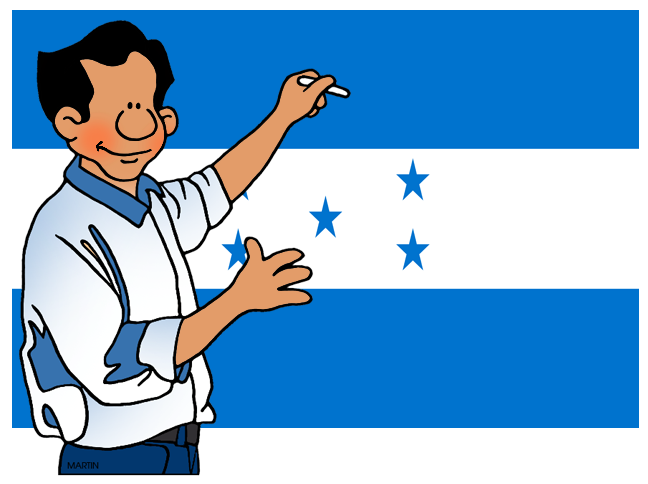Fun Facts about Honduras
According to the story, in 1502,
Christopher Columbus set foot on Honduras after a bad storm along the
northeastern coast. He said, "Thank goodness we got out of those
great depths!" And, Honduras means "great depths".
Honduras used to be called Spanish Honduras to make it separate and clear from British Honduras, now Belize. At one time, it was part of Spain's vast empire in the New World. However, Honduras became independent in 1821. Then, they later had to gain independence from the Federal Republic of Central America in 1838 and the United States of Central America in 1898.
The money in Honduras is called the Lempira. It is named after the ingidenous Lenca ruler who fought the Spanish conquistadors to his death in 1536.
The national bird of Honduras is the red macaw. They were sacred to the ancient Mayas. But, the name is so much better in Spanish. It's called the guacamaya. It sounds so close to guacamole that maybe they should consider changing the national bird to the green macaw.
The Maya ruins in Copán, a UNESCO World Heritage Site, are known for their fully intact hieroglyphic and statues. If you go there for a visit, you'll see some very tame guacamayas at the entrance to the park. They're all the red ones.
Copan slowly declined, died out, and was covered by the jungle. It was rediscovered in 1834 and an American diplomat bought the site from the farmer who owned the land for fifty dollars. The exploration and excavation started.
The second largest coral reef in the world is off the coast of Yucatán, Belize, and Honduras. The only larger reef is off the coast of Australia. On the Bay Islands off the shore of Honduras, it is very common to find Hondurans with blonde hair and blue eyes. They are the descendants of British pirates who settled in the area 500 years ago.
Spanish is the main language spoken in Honduras. However, if you travel the country, you'll also hear Garifuna, Miskito, English, and other Mayan languages.
Honduras used to be called Spanish Honduras to make it separate and clear from British Honduras, now Belize. At one time, it was part of Spain's vast empire in the New World. However, Honduras became independent in 1821. Then, they later had to gain independence from the Federal Republic of Central America in 1838 and the United States of Central America in 1898.
The money in Honduras is called the Lempira. It is named after the ingidenous Lenca ruler who fought the Spanish conquistadors to his death in 1536.
The national bird of Honduras is the red macaw. They were sacred to the ancient Mayas. But, the name is so much better in Spanish. It's called the guacamaya. It sounds so close to guacamole that maybe they should consider changing the national bird to the green macaw.
The Maya ruins in Copán, a UNESCO World Heritage Site, are known for their fully intact hieroglyphic and statues. If you go there for a visit, you'll see some very tame guacamayas at the entrance to the park. They're all the red ones.
Copan slowly declined, died out, and was covered by the jungle. It was rediscovered in 1834 and an American diplomat bought the site from the farmer who owned the land for fifty dollars. The exploration and excavation started.
The second largest coral reef in the world is off the coast of Yucatán, Belize, and Honduras. The only larger reef is off the coast of Australia. On the Bay Islands off the shore of Honduras, it is very common to find Hondurans with blonde hair and blue eyes. They are the descendants of British pirates who settled in the area 500 years ago.
Spanish is the main language spoken in Honduras. However, if you travel the country, you'll also hear Garifuna, Miskito, English, and other Mayan languages.
